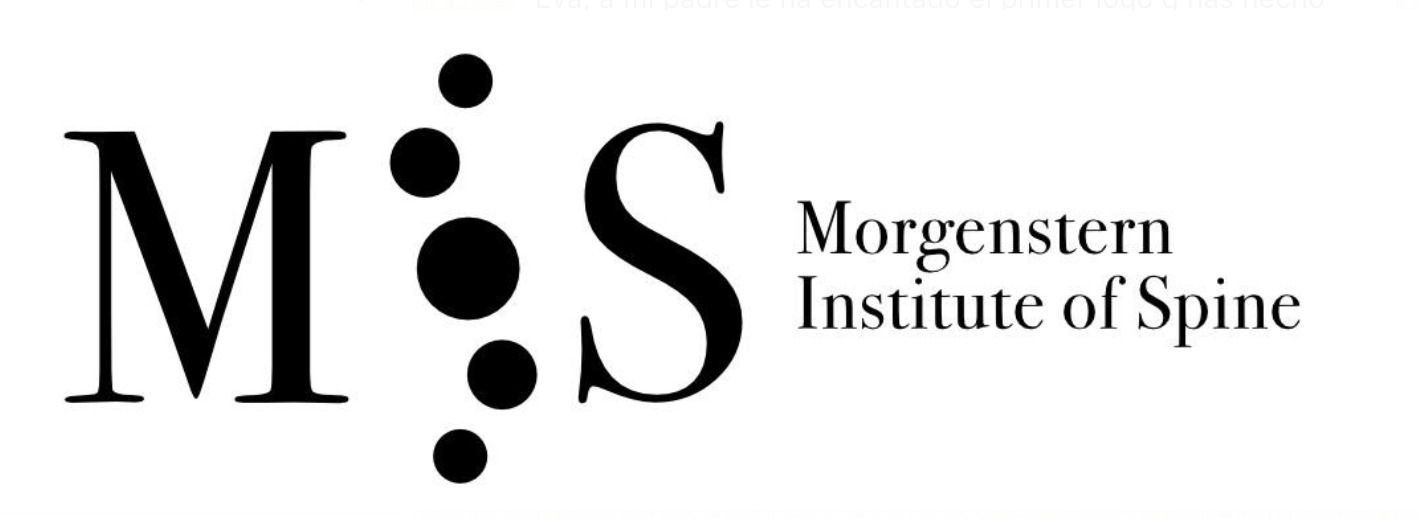Lumbar Endoscopic Surgery
Lumbar endoscopic surgery, at a glance
Interview with Doctor R. Morgenstern
Endoscopic spine surgery is done:
> Under local anesthesia
> With a skin incission of only 5-10 mm length
> Significantly less invasive than open spine surgery (also known as microsurgery and micro-discectomy)
> Pain relief is immediate or within a few hours after srugery.
> Allows the patient to return home within 24 hours after the operation.
Endoscopic spine surgery allows the treatment of
> Lumbar disc herniations
> Lumbar discal protusions
> Lumbar disc impingement
> Foraminal stenosis
> Central canal stenosis
> Low back pain
> Sciatic pain
> and many other lumbar pathologies
Frequently Asked Questions
Herniated disk
Lumbar endoscopic surgery images

Herniated disk compressing a nerve root resulting in sciatic pain in the leg.


Interactive image: scroll right/left. Pre- and post-operative images of an herniation after lumbar Endoscopic surgery.

Dr. Morgenstern performing endoscopic lumbar spine surgery.
Transforaminal endoscopic surgery of the lumbar spine
In traditional lumbar spine surgery (surgery of the back), large skin incissions are necessary to expose the back tissues and open up enough space for surgical instruments to fit in. In order to reach the spinal chord and nerves that are being compromised, important structural components of the lumbar spine such as the ligaments, the intervertebral disc or bone are removed during open surgery. This can lead to instability of the lumbar spine if it is not additionally stabilized with rods and screws. Hence, in open surgery the function and mobility of the back can be impaired. The removal of soft tissue and bone may lead to further complications such as bleeding, wound healing problems and instability in the postoperative stage that may require a stay in the intensive care unit (ICU) and possibly additional surgeries.
Lumbar endoscopy allows to perform back surgery through a minimal incission in the skin of just 7-9 mm. The back’s bony structures and soft tissues are accurately visualized with a video camera placed inside the endoscope. This allows using small instruments, which reduces the bleeding and important structures of the lumbar spine are preserved without compromising its stability. This type of surgery is called “Endoscopic Surgery of the Lumbar Spine”. Endoscopic surgery can be performed under local anesthesia. Therefore, a patient’s post-operative recovery is much faster. The patient usually resumes walking a few hours after surgery and hospital discharge is usually in less than 24h after the surgery.
Post-operative pain is usually immediately significantly decreased. Hence, little and small dosage pain medication is required during the first week after surgery.
Endoscopic surgery consists of advanced technologies, like HD video, laser and radiofrequency ablation, etc. among other sophisticated technology to provide a safe, fast and effective, pain-relieving surgery to the patient. It allows an effective treatment of lumbar and sciatic pain. Endoscopic surgery is also indicated for patients with back pain but no radiated leg pain nor neurogenic deficit (muscle weakness, tingling, etc.) for which traditional surgery is not an option and have been treated conservatively with little success.
Endoscopic spine surgery allows to effectively resolve back and sciatic pain problems caused by, e.g. a herniated lumbar disc, with or without an impinged nerve, foraminal stenosis and a disk protrusion causing intense back pain, resotring a high quality of life to the patient.
Video of an endoscopic surgery for a disk herniation
Image of an Hernia

Disk herniation of 4cm length removed with endoscopic spine surgery

